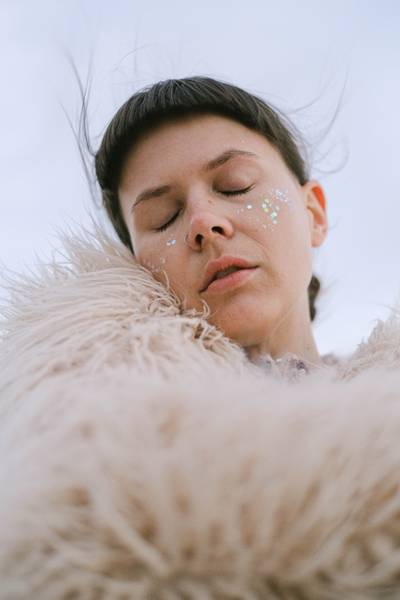Introduction #
The Human Face: Ear Detection dataset is a comprehensive collection featuring images of human faces intricately annotated to highlight specific ear regions. Comprising a total of 440 images, each containing one or more human faces, this dataset serves as a crucial resource for training and developing computer vision models specialized in detecting ears within human facial structures. With applications extending to fields like biometric authentication and surveillance, the dataset’s diverse images, sourced from multiple origins, offer varying resolutions and lighting conditions, enhancing its utility in training models to identify and analyze ears across different visual contexts.
Summary #
Human Face: Ear Detection is a dataset for instance segmentation, semantic segmentation, and object detection tasks. Possible applications of the dataset could be in the entertainment industry.
The dataset consists of 107 images with 110 labeled objects belonging to 1 single class (ear).
Images in the Ear Detection dataset have pixel-level instance segmentation annotations. Due to the nature of the instance segmentation task, it can be automatically transformed into a semantic segmentation (only one mask for every class) or object detection (bounding boxes for every object) tasks. All images are labeled (i.e. with annotations). There are 2 splits in the dataset: train (60 images) and val (47 images). The dataset was released in 2022.

Explore #
Ear Detection dataset has 107 images. Click on one of the examples below or open "Explore" tool anytime you need to view dataset images with annotations. This tool has extended visualization capabilities like zoom, translation, objects table, custom filters and more. Hover the mouse over the images to hide or show annotations.
























Class balance #
There are 1 annotation classes in the dataset. Find the general statistics and balances for every class in the table below. Click any row to preview images that have labels of the selected class. Sort by column to find the most rare or prevalent classes.
Class ㅤ | Images ㅤ | Objects ㅤ | Count on image average | Area on image average |
|---|---|---|---|---|
ear➔ polygon | 107 | 110 | 1.03 | 0.54% |
Images #
Explore every single image in the dataset with respect to the number of annotations of each class it has. Click a row to preview selected image. Sort by any column to find anomalies and edge cases. Use horizontal scroll if the table has many columns for a large number of classes in the dataset.
Object distribution #
Interactive heatmap chart for every class with object distribution shows how many images are in the dataset with a certain number of objects of a specific class. Users can click cell and see the list of all corresponding images.
Class sizes #
The table below gives various size properties of objects for every class. Click a row to see the image with annotations of the selected class. Sort columns to find classes with the smallest or largest objects or understand the size differences between classes.
Class | Object count | Avg area | Max area | Min area | Min height | Min height | Max height | Max height | Avg height | Avg height | Min width | Min width | Max width | Max width |
|---|---|---|---|---|---|---|---|---|---|---|---|---|---|---|
ear polygon | 110 | 0.52% | 2.1% | 0.04% | 121px | 3.52% | 1052px | 28.41% | 491px | 10.43% | 52px | 1.73% | 793px | 22.57% |
Spatial Heatmap #
The heatmaps below give the spatial distributions of all objects for every class. These visualizations provide insights into the most probable and rare object locations on the image. It helps analyze objects' placements in a dataset.

Objects #
Table contains all 110 objects. Click a row to preview an image with annotations, and use search or pagination to navigate. Sort columns to find outliers in the dataset.
Object ID ㅤ | Class ㅤ | Image name click row to open | Image size height x width | Height ㅤ | Height ㅤ | Width ㅤ | Width ㅤ | Area ㅤ |
|---|---|---|---|---|---|---|---|---|
1➔ | ear polygon | 162.jpg | 4480 x 6720 | 849px | 18.95% | 250px | 3.72% | 0.5% |
2➔ | ear polygon | 123.jpg | 3500 x 2333 | 160px | 4.57% | 102px | 4.37% | 0.14% |
3➔ | ear polygon | 151.jpg | 5659 x 3773 | 293px | 5.18% | 146px | 3.87% | 0.12% |
4➔ | ear polygon | 149.jpg | 4480 x 6720 | 402px | 8.97% | 154px | 2.29% | 0.15% |
5➔ | ear polygon | 134.jpg | 3822 x 3058 | 260px | 6.8% | 303px | 9.91% | 0.42% |
6➔ | ear polygon | 118.jpg | 3840 x 5760 | 405px | 10.55% | 171px | 2.97% | 0.19% |
7➔ | ear polygon | 117.jpg | 3390 x 5370 | 377px | 11.12% | 124px | 2.31% | 0.19% |
8➔ | ear polygon | 121.jpg | 2560 x 1708 | 165px | 6.45% | 140px | 8.2% | 0.3% |
9➔ | ear polygon | 152.jpg | 6144 x 4912 | 583px | 9.49% | 213px | 4.34% | 0.33% |
10➔ | ear polygon | 154.jpg | 5184 x 3456 | 771px | 14.87% | 547px | 15.83% | 1.47% |
License #
License is unknown for the Human Face: Ear Detection dataset.
Citation #
If you make use of the Ear Detection data, please cite the following reference:
@dataset{Ear Detection,
author={Harsh Ghadiya},
title={Human Face: Ear Detection},
year={2022},
url={https://www.kaggle.com/datasets/harshghadiya/human-face-ear-detection-with-annotation}
}
If you are happy with Dataset Ninja and use provided visualizations and tools in your work, please cite us:
@misc{ visualization-tools-for-ear-detection-dataset,
title = { Visualization Tools for Ear Detection Dataset },
type = { Computer Vision Tools },
author = { Dataset Ninja },
howpublished = { \url{ https://datasetninja.com/ear-detection } },
url = { https://datasetninja.com/ear-detection },
journal = { Dataset Ninja },
publisher = { Dataset Ninja },
year = { 2025 },
month = { may },
note = { visited on 2025-05-18 },
}Download #
Please visit dataset homepage to download the data.
Disclaimer #
Our gal from the legal dep told us we need to post this:
Dataset Ninja provides visualizations and statistics for some datasets that can be found online and can be downloaded by general audience. Dataset Ninja is not a dataset hosting platform and can only be used for informational purposes. The platform does not claim any rights for the original content, including images, videos, annotations and descriptions. Joint publishing is prohibited.
You take full responsibility when you use datasets presented at Dataset Ninja, as well as other information, including visualizations and statistics we provide. You are in charge of compliance with any dataset license and all other permissions. You are required to navigate datasets homepage and make sure that you can use it. In case of any questions, get in touch with us at hello@datasetninja.com.


